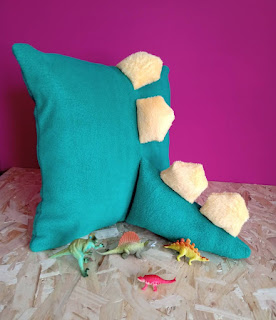Blackberries - Adventures in Natural Dyeing
I prefer not to dye with colours that have a low 'fastness' level, ie colours that fade easily in light or during washing, simply because selling a product to a customer that will change colour dramatically once that garment has been knitted and/or washed doesn't seem fair on the customer, and would just mean that FHY ends up with a reputation for bad quality products (note: I always warn that natural dye products sold by me can change/mellow slightly over their lifetime, but the products on www.folkestoneharbouryarn.com are generally those with a higher resistance to light and washing).
That doesn't mean that I can't experiment with products that I come across, to satisfy my own curiosity.
We had a glut of blackberries this year, and after experimenting with all the food options (jam, cake, pie, cocktails, sorbet, even more cocktails) that we could think of, I tried dyeing with them instead.
One of my favourite dye books 'Natural Dyes, Fast or Fugitive' by Gill Dalby has a blackberry dye recipe, although it warns that the colour is not light fast even with mordants (agents used to bind colour to fibres).
The colour reference chart in the book also has very disappointing grey/beige tones produced on wool shades 3 & 4).
I harvested 597g blackberries for 200g of yarn, which produced a ratio of 300% (or thereabouts) which is higher than the 200% recommended by the recipe. The yarn used was 100g of aran weight Southdown and 100g of sock weight Blue Faced Leicester.
I used an all-in-1 method (because it makes life a lot easier whilst working outside) instead of 'entering pre-mordanted wool', and also didn't remove the pips before adding the wool. I mashed the berries, added water (non-filtered, just straight from the hosepipe) put the yarn in and simmered the whole pot over a camping stove for about an hour, stirring occasionally, with 8% (16g) alum and 7% (14g) cream of tartar to fix the colour to the fibres. The colour started off as bright pink (middle image). Then I removed the pot from the heat and left it to cool on its own (note: it was one of those 'heatwave' days, so this took some time and probably continued cooking and attaching colour to the fibres throughout the afternoon). Once the pot was cool enough to put a gloved hand in (sometime in the evening) I removed the yarn (now a rich plummy red - see 3rd image above) and hung it on the line to drip dry.

On the line it continued to keep it's plummy tone. Because it was not going to rain I left the yarn out overnight to dry (this makes it easier to shake the plant bits out of the yarn strands rather than take messy, sticky, fruity yarn inside).
Day 1 (above left) shows the yarn still damp. It is still a strong plummy tone.
Day 2 (above centre) the yarn has dried to a berry red. The morning light might have made the yarn look lighter than it is, but you get an idea of the general tone.
Day 3 (above right) the berry red is not as evident, although the BFL shows some purple in the top right area. The yarn has changed to a greyer tone, a little bit like a berry stain on clothing.
Day 5 (above left) (note all photos are taken in daylight) there is still a hint of pink, but the yarn is 'mellowing'.
Day 6 (above centre) the pink tone is less evident in the purple grey colour.
Day 8 (above right) there's still a faint pinkness in the grey-purple.

Day 9 (above left) the colour is losing its strength and is slightly paler/whiter.
Day 11 (above centre) still some evidence of pink, but overall the purple-grey tome looks less strong.
Day 14 (above right) two weeks after dyeing, the colour is starting to settle at a greyish tone with hints of lilac.
Days 15, 32 & 38 after the yarn was dyed. The change isn't as dramatic and obvious as before, but there is definitely a reduction in the pinker tones, and an overall whitening/lightening of the yarn.
I shall continue to update this post periodically with photos showing the colour degradation of the blackberry dyed yarn.









Comments
Post a Comment